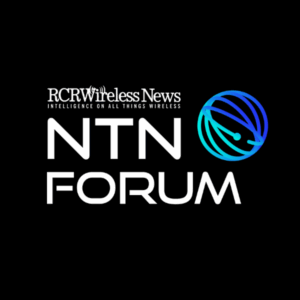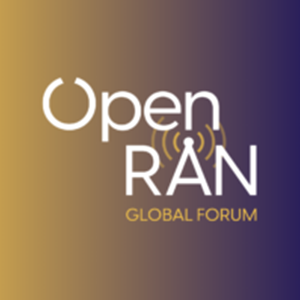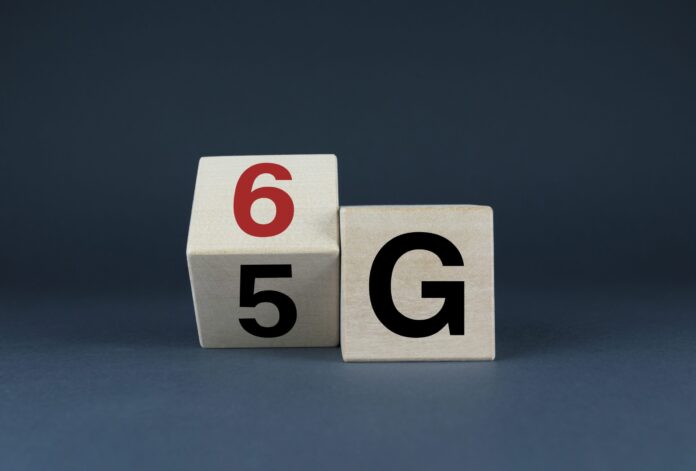Test and measurement companies have a unique perspective on the deployment and development of the latest network technologies and features. Andreas Roessler, technology manager with Rohde & Schwarz, provides some insights on terrestrial and non-terrestrial networks — what is happening now, and what is coming down the line.
This interview was conducted via email and has been edited for clarity and length.
Let’s start with a refresh on the state of 3GPP standards and development. Where do you see the industry in terms of adoption of Rel 16 and 17 and work on Rel 18 of 5G New Radio?
Before we discuss trends for deploying Rel-16 and 17 features, we need to assess the overall deployment status for 5G New Radio. According to industry sources, we have today 249 5G networks “on air” in 97 countries. From 2009 to 2013, we had 317 LTE networks live in 111 countries and territories. This is roughly 20% less compared to 4G LTE in the same time span since the initial launch of the first 4G LTE network and 5G network, respectively. I believe the reasons for that are manifold. Firstly, no clear “killer application” is yet identified, at least from a consumer perspective. We also see a slower-than-expected adoption rate for the market verticals, automotive, and the Industrial Internet of Things (IIoT). One reason is most likely the current state of the global economy; another is the complex deployment situation and the low number of current 5G Standalone deployments. The latest stats show that worldwide, 41 networks are using a 5G core, and thus an LTE signaling anchor is not required anymore. Only with 5G SA do we get access to all the bells and whistles that 5G New Radio offers, including network slicing, which, to a certain extent, is the foundation within 5G for use cases and applications that require a certain quality of service profile. Regarding individual 3GPP features, the industry’s focus for the last 12 months was to transition to Standalone Mode and introduce Rel-16 feature sets that help with power consumption. From our understanding, the first chipsets with Rel-17 support were only officially announced at Mobile World Congress Barcelona 2023, with expected shipments in the fall of this year. From that perspective, we don’t anticipate any Rel-17 features going commercial before mid-2024.
What new features or capabilities are you seeing high levels of interest in?
At the moment, it seems that RedCap, short for Reduced Capabilities, is one of the hot features that are currently the focus of the wireless industry. With RedCap, standardized as part of 3GPP Release 17, the device complexity will be significantly reduced to enable the Internet of Things (IoT) across a 5G network. It requires Standalone Mode operation, which, as discussed, is not yet widely available. Some vendors promote the use of RedCap not only for IoT but also for Augmented Reality (AR) applications, integrating 5G modem capabilities directly into AR glasses.
Another major topic coming with Release 17 is Non-terrestrial Networks (NTN). The primary use case is network coverage via satellite for emergencies in remote rural or offshore areas as well as for global tracking and positioning. Several service providers worldwide recently announced partnerships or showcased early demonstrations of NTN capabilities, including emergency messaging in areas without coverage. The testing of such critical features is of course imminent, and Rohde & Schwarz supports the industry already with test solutions for NTN, as demonstrated in a collaboration with MediaTek and Bullitt at MWC 2023 in Barcelona.
Do you see RedCap as a completely new functionality with distinct use cases, or is it meant to be more of a natural migration path for broadband-connected devices that may not need the full capabilities and/or speeds of 5G? What should people know about RedCap?
I always comment on RedCap as the first IoT technology based entirely on 5G. Besides RedCap, there are some enhancements like the ng-eNB where NB-IoT or LTE-M are made a “5G radio technology” to ensure their longevity. RedCap is not only reducing the complexity of the devices, enabling the industry to work on completely new categories of devices. RedCap requires a Standalone 5G operation, thus it is 5G IoT. What new in RedCap? The network can schedule access restrictions based on the user equipment (UE) capability, thus, coverage is not equal to the coverage a 5G smartphone experiences. Rohde & Schwarz will address this change with our drive test solutions. On the device, for sure it is there is a reduction of the complexity by shrinking the bandwidth to e.g. 20 MHz, reducing the number of antennas or allowing a half-duplex operation. This enables the industry to include new categories of devices into the 5G world, also with changing their data behavior. Let me give an example: A device like a CCTV camera produces much more data in the uplink direction versus the downlink, a completely different behavior from a human-driven smartphone. In the evolution of RedCap, we will see further enhancement with regard to capability reductions; for example, a bandwidth reduction of less than 5 MHz. This requires some change in the network or 5G concept, for example, the signaling bandwidth of the synchronization signals PBCH in the SSB block may extend this UE capability; consequently, we are discussing some puncturing mechanisms to allow such a UE to participate in our 5G network. Potentially there will be some impacts beyond the radio capability, thus in standardization and testing bodies, like for example the Global Certification Forum, the topic RedCap consumes quite some attention. Rohde & Schwarz offers with its mobile radio tester CMX500–lite, a special version designed and dedicated to accurately testing such low complexity UEs. Therefore, we consider RedCap more than just a natural migration or technology evolution.
What are the technical challenges you see with testing and deploying NTN?
There are a couple of challenges related to the entire protocol stack, and I will briefly comment on only a few of them; but this is the fascinating part of NTN, as it starts with a new dimension in the wireless world. First, let me comment on the paradigm change we face with NTN; we have now to talk about a moving “base station”, a satellite-based or airborne note, which is moving with respect to the receiving UE. This results in a time-variant carrier frequency change, aka Doppler shift. The second big challenge is the long delay or latency due to the large distance. It is not only the absolute latency, but what is more critical is the time-variant latency. For example, when the Low Earth Orbit (LEO) satellite is at the far end of the orbit, rising above the elevation angle to become available or leaving the edge falling below the elevation angle, the latency is at its longest. The satellite in the nadir position, perpendicular to the UE, faces the shortest latency. In other words, we face a dynamic delay over the time of the connection. A third challenge is the large path attenuation resulting in a low Signal-to-Noise Ratio (SNR). The good news is that communication is still possible under those conditions. Besides such RF challenges, there are a couple of signaling aspects. For example, the timing advance adjustment in NTN is much more complex than it is in terrestrial networks. In addition, there are impacts on several higher-layer protocol parameters like timer values, sequence numbers, and buffer sizes, to mention a few. And don’t forget about mobility. With NTN, we discuss several handover scenarios, including satellite-to-satellite handovers or satellite-to-terrestrial gNB handovers. Last but not least, coexistence aspects are important, especially with RF interference contemplations like terrestrial bands adjacent to satellite bands or, in the future, the incorporation of higher frequencies like Ku- or Ka-band into the terminals, which requires directive antennas.
How do you see AI/ML emerging in 3GPP standards and where will it be applied in telecom networks?
With Release 18, 3GPP studies for the first time the usage of Artificial Intelligence (AI) and Machine Learning (ML) from a Radio Access Networks (RAN) perspective. During this study phase, the community initially identified three use cases that will be used as the basis for all standardization efforts to define an AI/ML framework for 3GPP. These three use cases are to enhance channel state information (CSI) feedback principles, beam management, and positioning accuracy enhancements. From a test and measurement perspective, the CSI feedback enhancement use case is very interesting, because it uses two-sided ML models involving the network and the user equipment. Today’s mobile devices do not provide full-channel feedback based on quality measurements, but rather only a snapshot due to the amount of information to be transmitted. The idea is now to use an ML-based autoencoder approach, compressing this information and therefore enabling a better feedback mechanism. An autoencoder is comprised of an encoder running on the UE side and a decoder running on the network side. Besides the compression aspects, 3GPP also studies the case, using the received feedback data for channel prediction, resulting in better scheduling decisions and therefore overall transmission.
Ultimately, the study item will transition into a work item with Release 19 and the identified concepts and discussed procedures will be integrated into the impacted technical specifications. 3GPP just announced the official schedule for Release 19 with an ASN.1 syntax freeze in late 2025. Pending on complexity, it typically takes 9 to 12 months to commercialize features defined in a release. From that perspective, we most likely will see none of these features before early 2026.
To switch gears and look a little further forward—what observations can you make about 6G development so far? Where do you see R&D focusing, and are there any specific tests or demonstrations that Rohde & Schwarz has been part of that you think are exciting?
Many researchers and industry players believe that a future 6G standard will natively support AI/ML on the air interface. One idea is to replace signal processing blocks, specifically on the receiver side, with trained machine-learning models for channel estimation, channel equalization, and demapping. This concept is understood as a neural receiver. Rohde & Schwarz teamed up with Nvidia to demonstrate and validate a neural receiver concept in a hardware-in-the-loop test bed. Nvidia used its physical layer research software framework SIONNA to develop and train a neural receiver for the UMi channel model defined by 3GPP. The R&S SMW200A vector signal generator is utilized to emulate two users, transmitting a 5G NR uplink signal with a MIMO 2×2 configuration, but facing different channel conditions by applying different fading profiles and noise settings per-user. The data is captured by R&S MSR4 multi-purpose satellite receiver, pre-processed by R&S VSE Vector Signal Explorer software, performing FFT operation and CP removal before injecting this dataset into the neural receiver model. The simulated performance data of the neural receiver is now verified using the generated signals from the test and measurement hardware. The testbed will enable researchers to generate data sets and validate the neural receiver models by not relying on synthetic data and pure simulations. The application is captured in the following video clip: https://youtu.be/BQyxBYzdg5k
Although AI/ML is one of the hot buzzwords within 6G research, it is not the only essential focus area of current 6G research. Joint communication and sensing (JCAS), sometimes also referred to as Integrated Sensing and Communication (ISAC), will enable new use cases while providing the network and devices with a sixth sense combining wireless communication with radar capabilities. Furthermore, a paradigm change applies, as researchers use metamaterial to actively modify the propagation channel with reconfigurable intelligent surfaces (RIS) instead of taking the propagation channel as it is. All these technology components will require adapted or new measurement techniques, which we at Rohde & Schwarz are actively working on.
Looking for more observations on trends and challenges in current and future testing? Keep an eye out for RCR’s key findings report from our virtual Test and Measurement Forum event.







